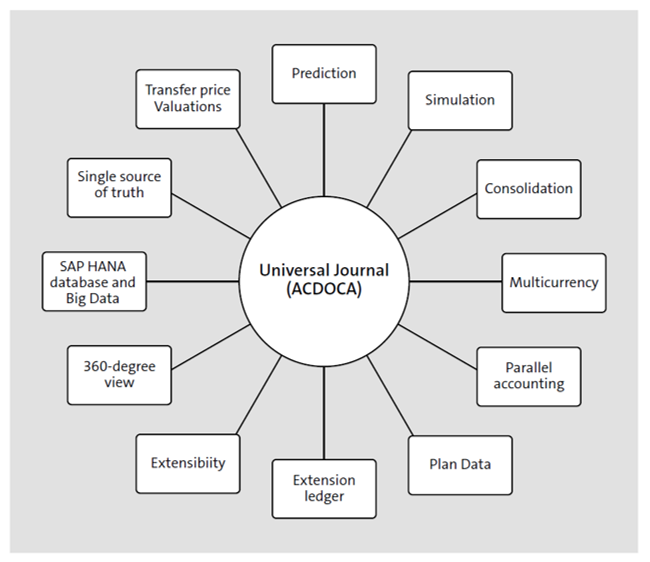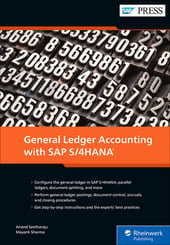SAP S/4HANA general ledger accounting offers several new features. Let’s look at 11 of them.
With the Universal Journal (table ACDOCA), SAP has delivered a complete financial and management accounting solution as a standard solution. Business transactions, captured in hundreds of dimensions and fields, are now stored in the Universal Journal.
The key features of general ledger accounting include the following.
Single Source of Truth
The Universal Journal now serves as the single source of truth because it combines other SAP components, such as controlling, fixed assets, profitability analysis, and the material ledger.
SAP HANA and Big Data
With its in-memory database, SAP has eliminated unnecessary redundancy and avoids the need for aggregation performed on the fly. Instead, by using predefined aggregate tables, the general ledger enables real-time reporting capabilities with large datasets. Additional month-end reconciliation is eliminated as a result of this design, which enables automatic reconciliation. SAP S/4HANA provides drilldown capabilities and navigation paths so you can source documents in a fraction of a second. Moreover, SAP has optimized the Universal Journal table to handle big data, so you don’t have to worry about large volumes of data.
360-Degree View
Due to real-time integration with other SAP components, SAP offers numerous SAP Fiori apps for viewing all accounting activities using key performance indicators (KPIs) and cards.
Extensibility
SAP S/4HANA offers extensibility features so you can add custom fields to the Universal Journal.
Extension Ledgers
SAP has introduced an extension ledger capability to enhance the standard general ledger. Extension ledgers can provide an internal management view (in contrast to views for external users), with simple configuration. Extension ledgers inherit from their underlying ledgers.
Parallel Accounting
The Universal Journal supports parallel accounting using parallel ledgers. SAP recommends the parallel ledger approach to meet certain accounting requirements.
Multicurrency Support
The Universal Journal now supports additional new parallel currencies.
Consolidation
Real-time consolidation is now possible with the unified data model using detailed documents from the Universal Journal (table ACDOCA), consolidated postings (table ACDOCC), and virtual providers in SAP Business Warehouse (SAP BW).
Simulation
Before period-end close, you can simulate data before posting.
Prediction Accounting
Using extension ledgers, users can now perform prediction accounting, for example, for considering incoming sales orders.
Plan Data
Plan and actual comparison reports, through analytical SAP Fiori apps, can now read from the Universal Journal (table ACDOCA) and the planning table (table ACDOCP) and display this information to users.
The figure below shows the features of the Universal Journal in the general ledger in SAP.

We strongly recommend reviewing the following SAP Notes to learn about all the new features offered in SAP S/4HANA general ledger accounting:
- SAP Note 2842890 FAQ SAP S/4HANA Finance
- SAP Note 2428741 Universal Journal FAQ
Editor’s note: This post has been adapted from a section of the book General Ledger Accounting with SAP S/4HANA by Anand Seetharaju and Mayank Sharma.



Comments